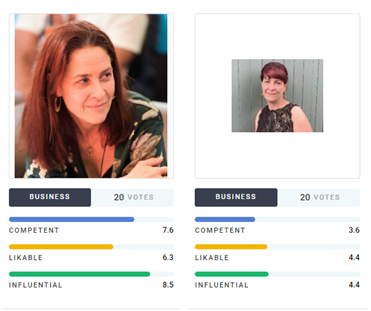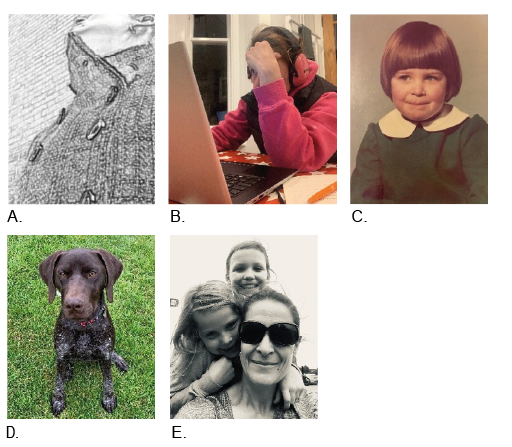2.1 Developing your personal brand
Having thought about your digital persona in your personal life, now think about how you present yourself in a work context. If you have uploaded a photo onto work-related platforms, how do you think this portrays you? How do you behave in meetings – is this different in person, hybrid or virtual only? You might like to ask a trusted colleague how they perceive you.
If you use social media/networking in a work context, have you considered the blurring of your professional and personal digital personas, especially if you use the same accounts for both? One example might be LinkedIn.
Activity 4 Using social media for professional purposes
If you use social media/networking for both professional and personal use, how much thought do you give to the impact a personal post might have on your professional brand? Does your post adhere to your organisational guidelines and policies?
Take time to find and review your organisational social media guidelines and policies.
Are you confident that how you use social media/networking considers these policies? How do you feel about having to be mindful of organisational requirements, even if what you are doing is outside of work?
You may be familiar with the term ‘personal brand’. This is something that you need to be mindful of within a professional setting and how your ‘personal’ persona is an extension of this. Understanding the difference between your personal brand and personal branding is useful. The following definitions help explore the difference:
‘A personal brand is a widely-recognized and largely-uniform perception or impression of an individual based on their experience, expertise, competencies, actions and/or achievements within a community, industry, or the marketplace at large.
‘Personal Branding is the conscious and intentional effort to create and influence public perception of an individual by positioning them as an authority in their industry, elevating their credibility, and differentiating themselves from the competition, to ultimately advance their career, increase their circle of influence, and have a larger impact.’
As hybrid working has become more commonplace due to the COVID-19 pandemic, for many of us, so has our acceptance of a more casual approach to our personal brand and how we behave online.
Our remote working environments may now include children and pets in the background, what we wear is perhaps more casual and our workstations are set up anywhere there is space in our homes or co-working locations. This has led to uncertainty for us as employees. We need to have the ‘know-how’ and ‘environments’ to understand what hybrid behaviours are expected (George, 2021).
One of the most important elements of your ‘brand’ is your profile photo. Often these are the only visual reference someone will have for you, as we rely on online environments to communicate and collaborate, do not always turn our cameras on in virtual meetings and often never physically meet the people we interact with. Profile photos remove anonymity and provide information about your gender, age and ethnicity that can be helpful to provide a visual cue to you as a person. It is also useful to remember that people will also form an opinion of you based on your photo.
As an experiment, I uploaded two profile photos of me to Photofeeler [Tip: hold Ctrl and click a link to open it in a new tab. (Hide tip)] , which uses human opinion and AI to provide feedback on how your profile photo may be perceived. It is worth noting, as I monitored the poll, the scores fluctuated. It was disappointing to drop from 8.7 to 7.6 for competence, but it is worth remembering that how you are perceived is subjective.
Activity 5 Your profile photo
There are some simple steps you can take to develop your digital brand and behaviours.
Step 1
Review your profile photo across all work and personal online platforms.
You profile photo is important, especially when you haven’t and are unlikely to meet someone face to face. It provides a visual cue for the other person as to who you are and sets the tone for how the organisation may be reflected to others. It also means that if you are engaged in audio-only calls, the person you are talking to is not looking at blank screen. Equally, it is useful to have seen a picture of your work colleague if you do arrange to meet them face to face, as you will know whom to look for when you arrive at the meeting place.
Step 2
Look at the images below – which one would you use for a work profile picture?
Which do you think is the most suitable professional profile picture?
Why did you think that is the most suitable picture? Note your reasons in the box below.
Feedback
All three photos could be used for a profile picture, but your choice is likely to be linked to personal preference and what you feel is appropriate for a profile picture.
Photo A reflects someone who is approachable and looks natural. However, her head is turned slightly to far away from the camera, and is she smiling too much for a professional photo?
Photo B reflects someone who is serious, and the headshot filling the whole frame can feel that they are invading your personal space.
Photo C reflects a person who comes across as friendly because she is smiling, but she is not engaged with you. This photo would be better as an image with a post or website to reflect activities someone is involved with, rather than a profile picture.
Ideally in a profile photo, you would aim to have as much of your face pointed towards the camera as you can, and it is fine to slightly turn your head, as it can help to soften your appearance and help to put you at ease, especially if you are uncomfortable having your picture taken. Smiling is a personal preference; it can project warmth and being approachable. Ideally your profile photo would not have other distractions; it is designed to allow people to have a visual reference as to who you are.
Step 3
Comment
This is a trick question, as none of these photos are ideal for my work profile photo, and yet all too frequently these are the kinds of images you see uploaded for work profile pictures.
A and B: Neither of these show ‘me’. They are abstract and provide no frame of reference for anyone wanting to know what I look like in case we ever meet in person.
C and D: While pictures of me as a child or my pets may give an insight into other parts of my life, they do not reflect me in my professional life and so should not really be used.
E: Photos with your children, family or friends should not be used in a work context. Apart from permission issues, there are also online safety concerns to consider, especially in respect to keeping children safe online.
This is the image I use professionally; you can clearly identify me, I am leaning forwards as if in a conversation with someone, which hopefully reflects that I am approachable and interested in listening to you.
However, there is one issue with this photo, in that it is now out of date. I have a new hairstyle, so it is not a current reflection of what I look like. Updating your profile picture to reflect changes in your appearance is as important as choosing a suitable one in the first place.
The simplest approach for choosing a profile photo is if you have a staff identity badge, either use that photo, if not too old, or a similar one that reflects how you look now. Choose something that reflects the image you want at work. Then use it consistently on all platforms you use for work that require a profile picture.




